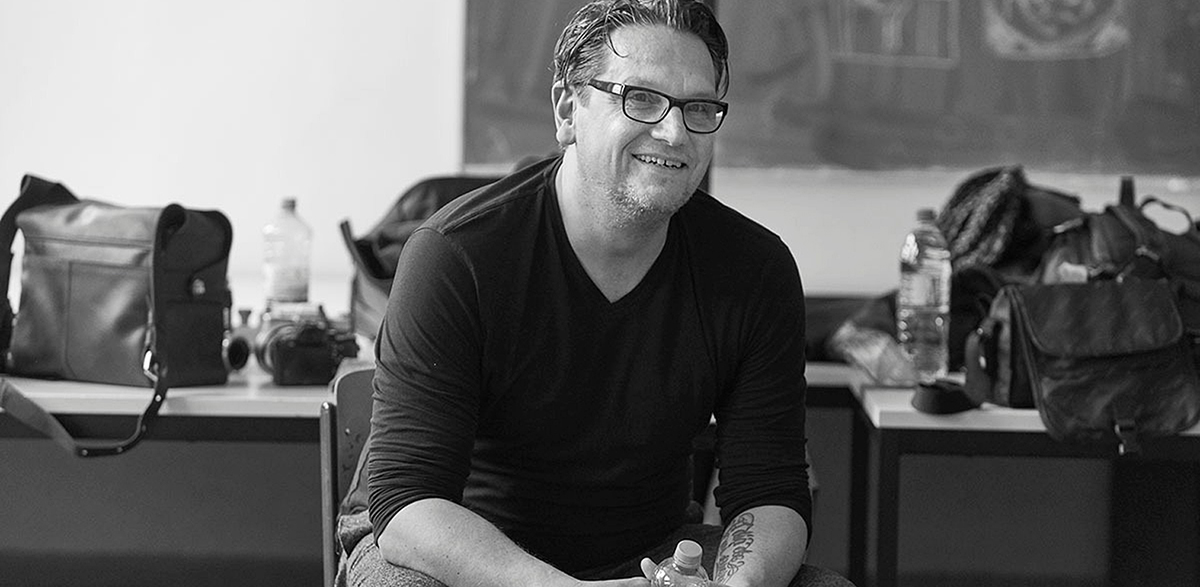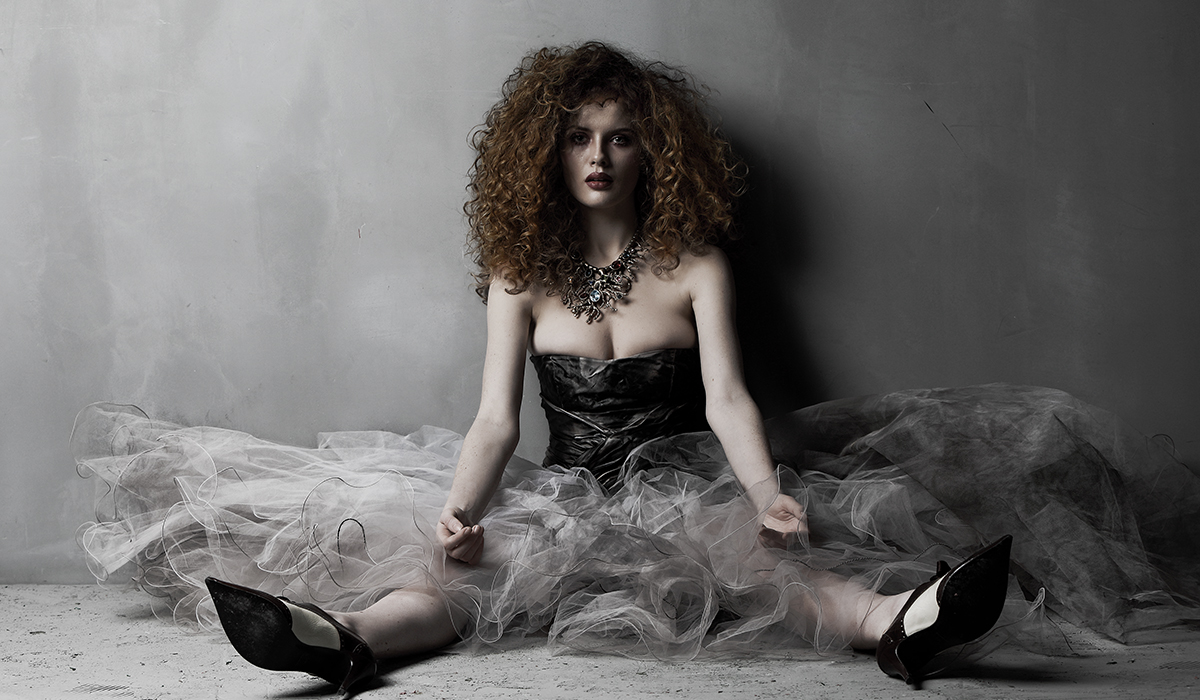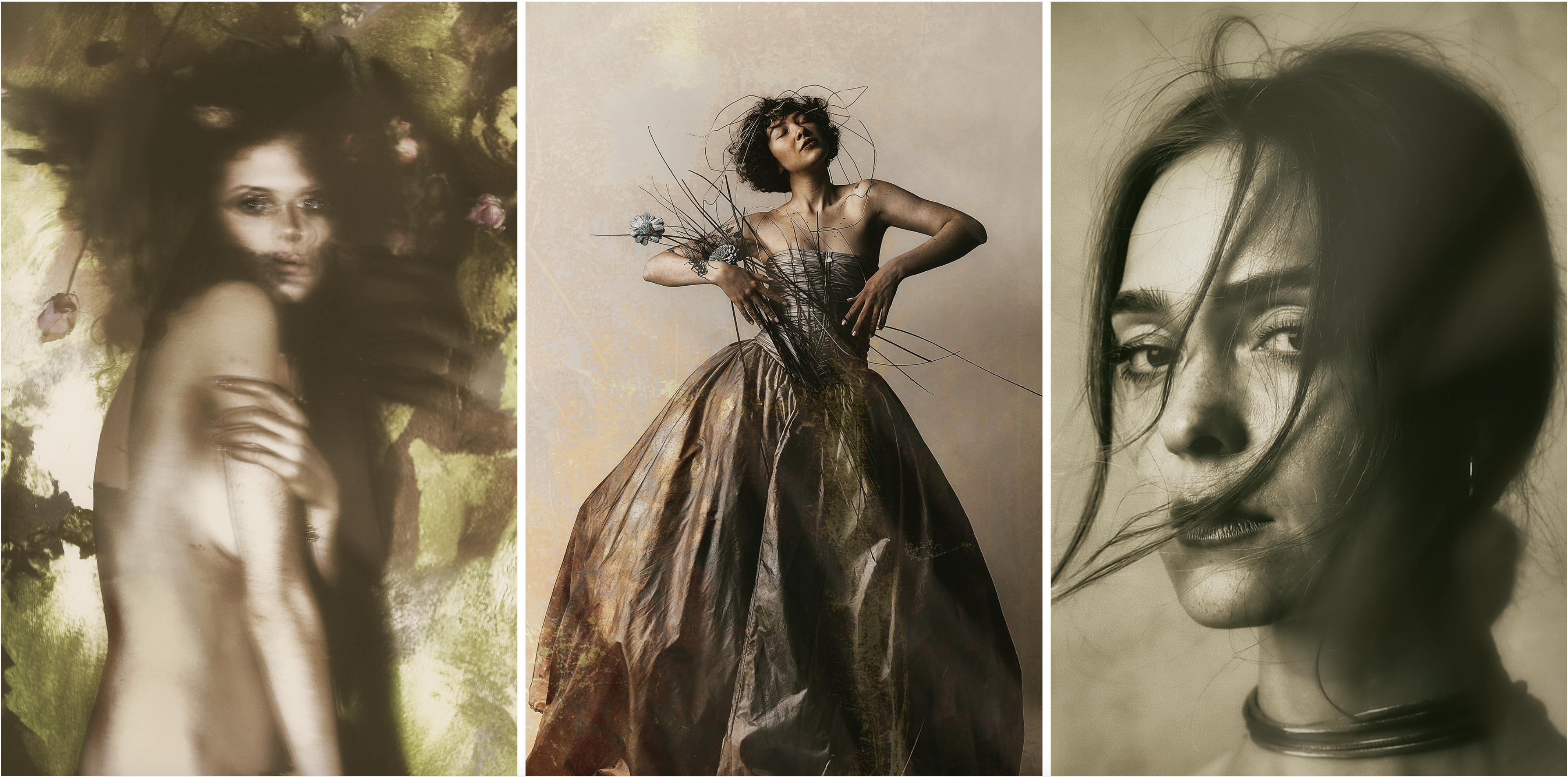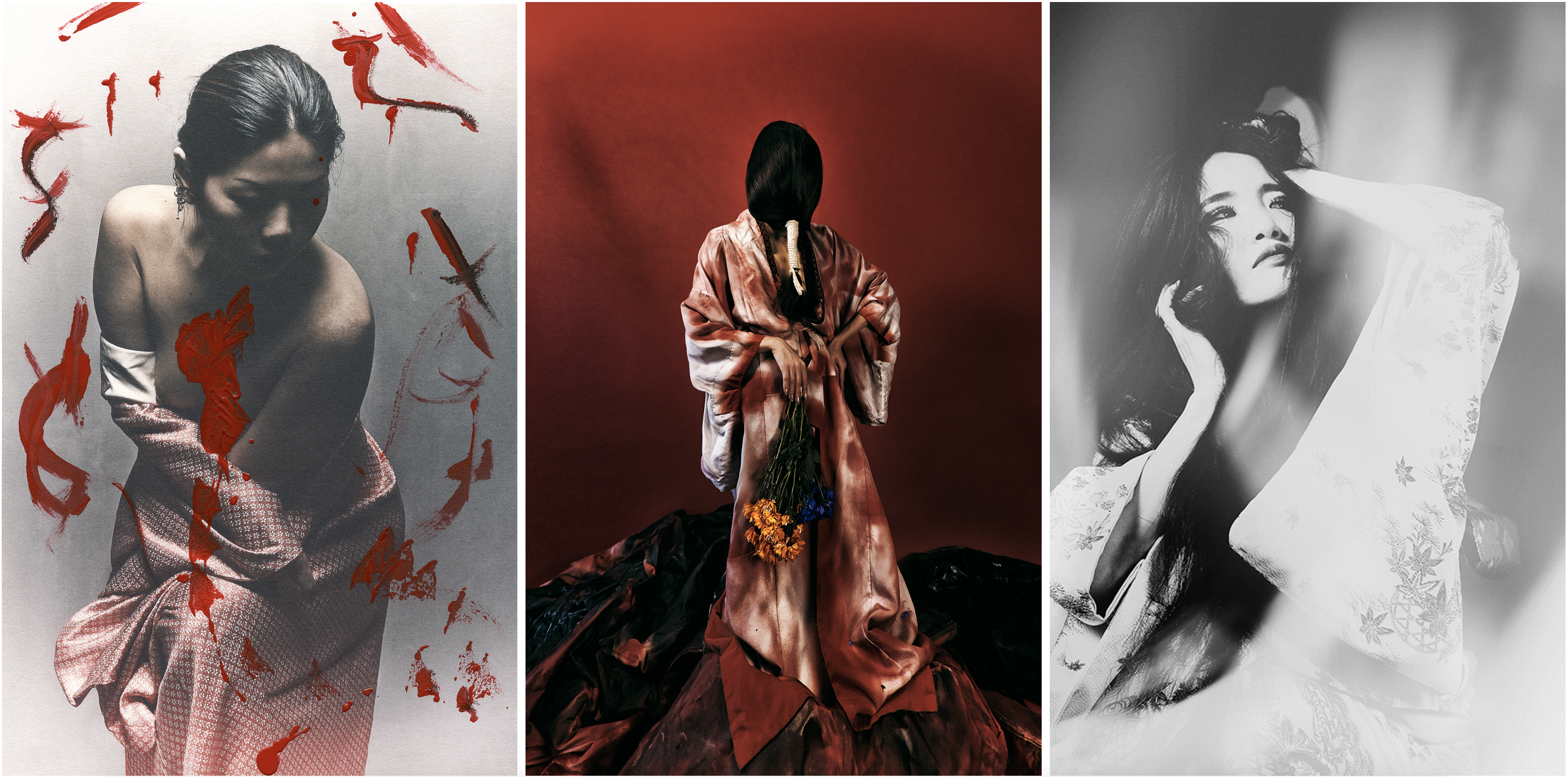
Text by Lyubov Melnickowa
Tell us a little about yourself. As an art photographer, you have a very unusual background. Please tell our readers more about it.
My name is Alexander Platz and I was born in Berlin. In 1984, when I was nineteen, I joined the Berlin police force. At the time, I had no exposure to art whatsoever. I loved the training and the job, because I enjoyed working with people back then, too.
My first encounter with creative work came in the nineties, when I wrote novels and short stories, as a kind of contest, with friends who worked as actors. This is also how I got started working as a consultant, training actors for their roles, while still continuing my police work. One of my friends was the antagonist in the police series “Die Wache”. Later, I completed a project on “Operational Training for the Berlin Riot Police”. Here, I was the idea generator, scriptwriter and director, and was responsible for the production and presentation of a 15-minute film about the results.
In the meantime, as a fully fledged police officer, I devoted several years to pursuing my conventional career with the police. In 2004, after a work-related accident (resulting in post-traumatic stress disorder), I found my way to photography, quite by chance. I fought against the trauma-related flashbacks by taking photos that formed new images in my head and helped me find my way back to my emotions. I had absolutely no idea about photographic techniques and wasn’t interested in them. I just wanted to take photos, and was on the „hunt for my inner self“. During this time, I only learned the techniques that I really needed. My pictures from this period always had a sombre aspect. My works included portraits, nudes, erotic studies, dance photography at the Friedrichstadt-Palast revue theatre in Berlin, and portraits of boxers. Sometimes, I think I’ve always been searching for human biographies, encounters and experiences through my work, to learn more about life.

Upcycling Fashion
In 2016, it occurred to me that with my people photography I’d dabbled in just about everything except fashion. I’m not a fan of talking about things that I’ve never delved into before. So the first thing I did was start researching, and I emersed myself in this via YouTube. I asked myself how I could combine fashion photography with my interest in people and their expression.
Because I want to be independent in my work, I decided to go against the traditional path of working with designers and stylists. I wanted to develop my own interpretation of people and fashion in my photographic world and find my personal visual language.
By happy chance, I stumbled upon a documentary about “anti-fashion” and “grunge”. I’m also a big fan of the English “mod” subculture and its development through to today. There are many facets of the world of fashion that can be traced back to these influences. I could identify with a lot of this, since my own style of dress and my lifestyle are based on this subculture. And so, the idea of using this as a starting point began to grow.
As I browsed through Berlin’s second-hand shops and bought clothes; I learned everything I could about what interested me and about fashion. I used, and still do use, international magazines, YouTube documentaries, books and interviews. And then I started the photographic work. This is how the visual language and aesthetics that I still use today came into being.
At the same time, I was also working on my “My Japanese Faction” project. Here, I was able to process my fascination with Japanese aesthetics, my enthusiasm for Yoshi Yamamoto, Nobuyoshi Araki, Takeshi Kitano and the Japanese samurai period. My fascination is fuelled by the pervasive interaction between the exterior and the internal feelings in Japanese history and the present day.
All these experiences come together in my current upcycling project: “Fairy Tale Dreams”.
In 2010, I left the police force and focussed entirely on photography and art.

Upcycling Fashion
From 1993 to 1996, you studied public law at the Berlin School of Economics and Law. Why didn’t you opt to study art? Do you have plans to do this in the future? Do you think that a photographer needs some kind of formal education?
My studies took place while I was still active in the police force and they served to advance my police career. I had no involvement with photography or art at the time. However, a lot of what I learned was, and continues to be, useful to me in my artistic development. Organisation, research and scientific work are all brought to bear in my development. I used these skills to work my way into every topic, and I came up with results on both a rational and emotional level. Actually, it was a self-organised course of study.
This has both advantages and disadvantages. The network and content that a traditional art course offers were missing. I work hard on this, however, in parallel to my actual work. On the other hand, my actual degree, and also my work as a teacher at the police academy, are an advantage when it comes to structured planning and communication with my project partners and the preparation of exhibitions.
But doing a traditional course in art or photography was something that never occurred to me. My medium, photography, and the development of the internet made it possible for me to choose my own direction and to evolve. These days, I’m so deeply involved in my development that I won’t take a university degree course.
I think that training or a degree in photography can be important. It’s good if someone is interested in that and goes ahead with it. Photography and art are so extensive that you can learn many things that you won’t learn if you’re self-taught. On the other hand, teaching yourself allows you to determine everything yourself and to put all your energy into pursuing your own ideas and dreams.
But, whether you choose the classical or the autodidactic path, a good foundation of discipline is necessary to keep moving forward and learning.
I think it’s great that today we have the option of choosing our own path.
Your work depicts women. Why women? Do you think it’s easier to convey the beauty of a female image in photography than a male one?
I do photograph men, too, such as dancers, boxers, actors and other creative people.
But my main focus in on working with women. For me, they symbolise the very origin of life. In many of my fashion works, you can see the female breast. This isn’t so much erotic as symbolic of this aspect of women’s lives as a beginning and as self-confidence, and it supports the overall expression of the works. Women are closer to their emotions and more courageous in interpreting and displaying them when working in front of the camera. Our work together is mostly a “dance”, in that there aren’t many set poses. In fashion photography, I apply the experience I gained in dance and boxing photography. For me, it’s a search for that “unexpected moment”. We follow each other. And in doing so, we challenge each other in our respective roles. It’s a highly concentrated process. Quite often, I’m physically and mentally exhausted after a photo shoot. This way of working together so freely is what gives the photographs the special expression that reflects my idea of beauty, aesthetics and female self-confidence. I love this process.
With men, the projects are also very intensive, but working with women is closer to my heart and more fulfilling.

Upcycling Fashion
Your works have a certain style. How did this style take shape?
Because my first steps in photography were taken alone and without any rules, I was initially particularly fascinated by the Surrealists and Dadaists of the 1920s and their approach to images. The freedom of Dadaism and Surrealism gave me space to experiment and develop. The expression and effect of a work were more important to me than the classical photographic process. The camera is, and remains, simply a kind of pen or brush that I can use to capture whatever fascinates me. It was in 2007, when I worked on a project in the Friedrichstadt-Palast in Berlin with the ensemble, that the idea of the “unexpected moment” took hold of me for the first time. That fraction of a second, in which you capture the perfect position in a sequence of movement. Thanks to my “stage photography”, I learned to “feel” or anticipate the moment just before this perfect position and to take that shot. I continued to improve this skill in my later work in boxing.
A further aspect, here, is my continuous learning. During my many years of research and image analysis, I found my own style. One of my self-selected “professors” was the celebrated Diana Vreeland. She said: “The eye has to travel!” To paraphrase: as a photographer, you can be anything but don’t be boring!
All these various aspects allowed me to find my style. I’m curious about how it will continue to develop and excited to see where the next few years will take me.
What’s the most important aspect of photography for you?
The freedom to realise and portray my ideas. To give them a material form. In preparation and implementation as well as in the subsequent retouching. It always moves me forward and allows me to learn more in order to express my feelings. Here, I’m guided only by myself. I reject all forms of dogma and ideology. I celebrate self-fulfilment through the freedom of art.
And I love meeting and working with people.
You teach photography at the Community College Berlin Treptow Köpenick. What motivated you to start teaching?
Since I’ve dedicated myself to artistic photography and have never undertaken any commercial work, ensuring the financial viability of my projects is a major issue. Teaching allowed me to earn part of my budget. I knew from my past endeavours that teaching was something I enjoyed. So, as well as benefitting from the financial aspect, I found the teaching very stimulating and a distraction from everyday life.
These courses also give me an incentive to keep learning and to keep evaluating the courses. My students include both amateurs and professionals. In the lessons, their thoughts also provide me with new perspectives. It’s a give and take situation for all concerned.
All this motivates me, time and time again.
What do you think is the most important thing students can learn from your lessons?
The world of photography and art is so multifarious. I introduce them to my world of photography, my ideas and my imagination, to expand their vision. There’s no right or wrong. It’s all about their development. “Why do I take photographs?” “What subject really interests me?” “How can I follow my chosen path?” “How can I find and maintain enjoyment in it?”


Tell us about your creative plans for the future?
I want to continue developing my “Fairy Tale Project”. There’s still so much to discover there. At the moment, I’m working with Islamic women on a project about Islamic fashion and the “hijab”.
Every day, a new idea materialises, and I write it down in a small book.
I’m also heavily involved in the current discussion about nudity in art and the public arena. For me, a tendency toward restriction is emerging, moving toward a “phase of apparent moral prudishness”.
I have a project in mind, which would involve exploring this and would bring together and interpret the aspects of nude photography, erotic photography and pornography on an artistic level.
The working title is “Por-nu-graphy?!”, derived from the terms pornography and nude. But these works, too, will take a subtle rather than an “in your face” approach.
And then, I’m always busy interpreting my ideas on the English subculture of the sixties and seventies in photographic terms.
So, I still have quite a lot of plans and hope to be able to bring them all to fruition.

